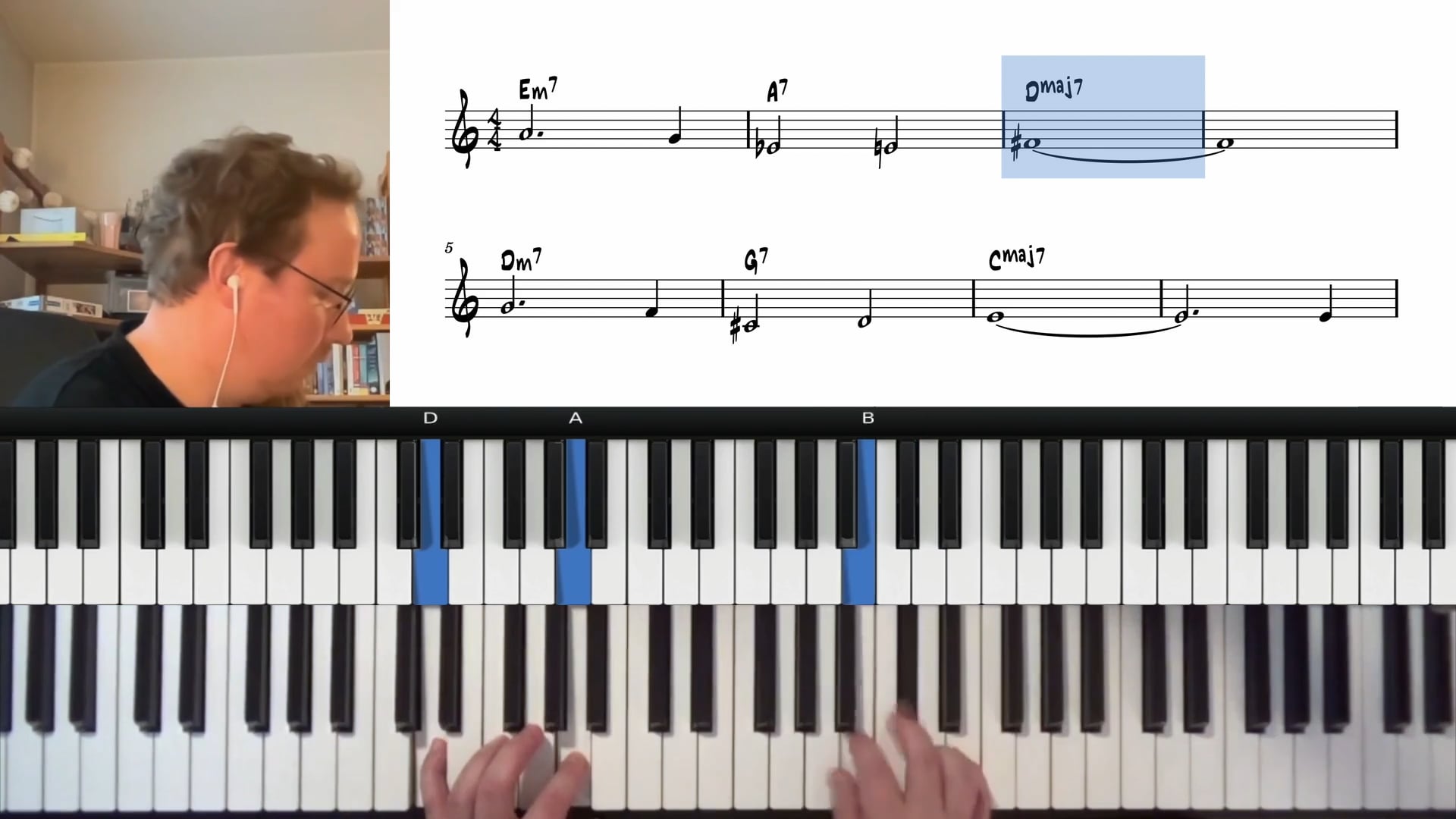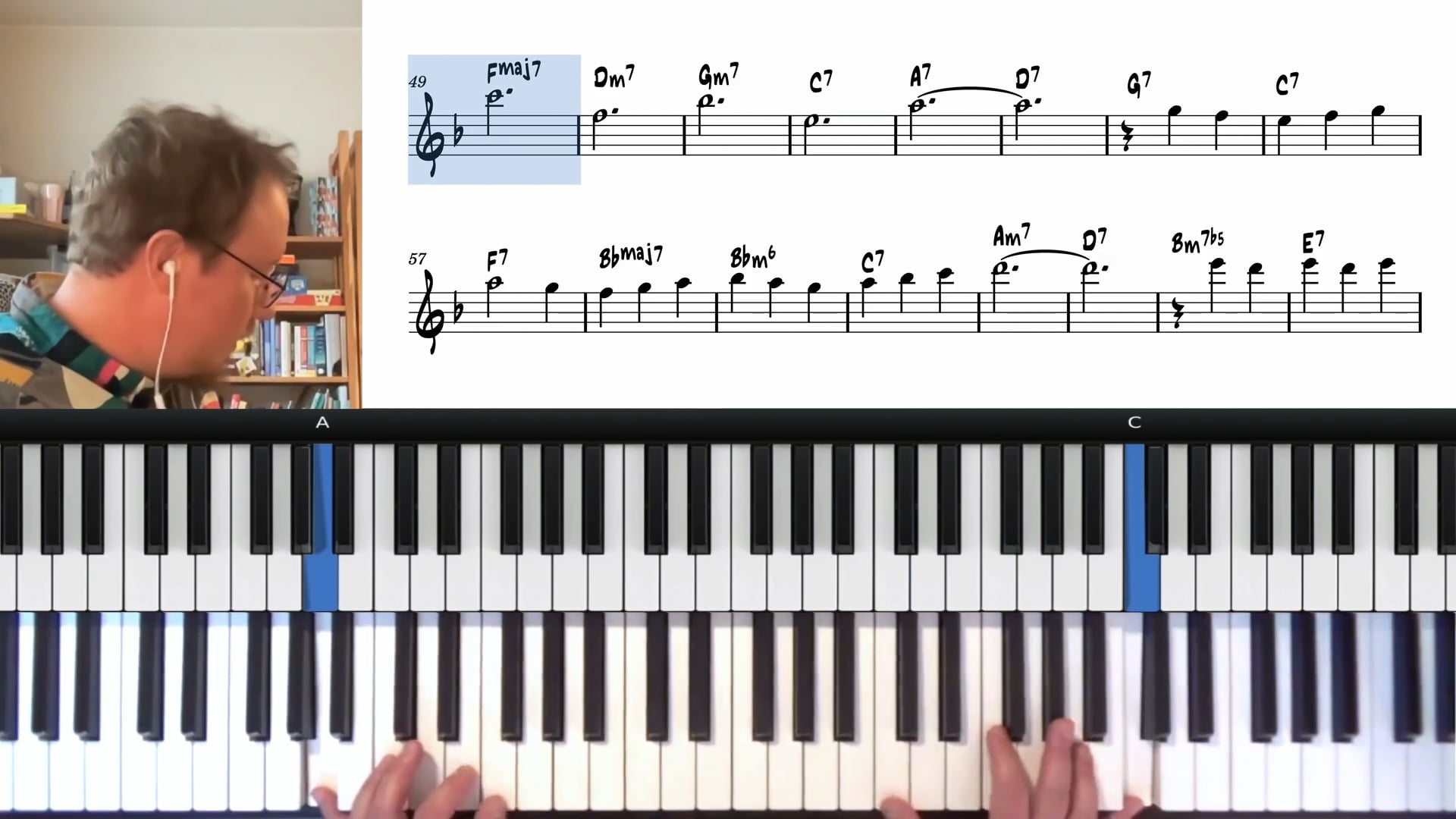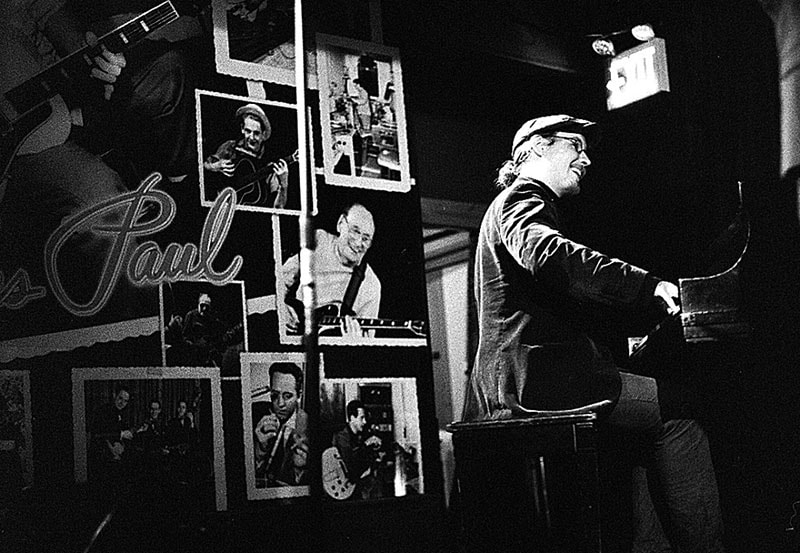

Tuomo Uusitalo
Tuomo is an award-winning pianist, composer, arranger and educator. Having released two albums as a leader, he has established himself in the New York jazz scene and continues touring internationally both as a leader as well as sideman.
Live Seminar Resources
Live Seminar Resources
PDF Downloads
- Workshop Handout
Join PianoGroove Pro to access all downloads and learning resources.
Download theory supplements, midi files, chord changes and full note-for-note transcriptions of every lesson.
- 'Tune Up' Chord Changes
Join PianoGroove Pro to access all downloads and learning resources.
Download theory supplements, midi files, chord changes and full note-for-note transcriptions of every lesson.
Seminar Description
Seminar Description
“Tune Up” – Jazz Standard Workshop
Welcome to this jazz standard workshop where we explore the iconic tune “Tune Up.” This composition, often credited to Miles Davis but actually written by Eddie Vinson, is a staple in jam sessions and a key part of the jazz repertoire. Originally recorded by Miles Davis on his 1953 album “Blue Haze,” the tune remains one of the most commonly played jazz standards worldwide.
Understanding the Harmony
The defining feature of “Tune Up” is its modulation through three different keys. The tune follows a simple yet effective 2-5-1 progression in each key:
- Starts in D major (E-7 to A7 to Dmaj7)
- Modulates to C major (D-7 to G7 to Cmaj7)
- Finally moves to Bb major (C-7 to F7 to Bbmaj7)
This frequent modulation makes it a great study piece for improvisation and voice leading, requiring players to smoothly navigate between different keys.
The Melody & Harmonic Characteristics
The melody of “Tune Up” is built on a simple yet striking motif that repeats in different keys. A key feature of the melody is the #11 tension over the dominant chords, creating a distinctive and recognizable jazz sound. The chromatic movement in the melody also enhances the harmonic transitions, reinforcing the tune’s modern bebop character.
Improvisation Concepts
1. Chord Tones & Approach Notes
A strong melodic line is built by emphasizing chord tones (1, 3, 5, 7) and connecting them with approach notes. An effective approach is to:
- Use chromatic approach notes from below
- Use diatonic approach notes from above
- Land on chord tones on strong beats
Practicing improvisation using only chord tones helps internalize the harmony and ensures strong note choices when soloing.
2. Using Jazz Language
Jazz improvisation relies on learning classic bebop phrases and incorporating them into solos. Here are two example 2-5-1 phrases that work well over “Tune Up”:
- Phrase 1: A Hank Mobley-inspired bebop lick featuring a mix of chord tones, approach notes, and chromatic passing tones.
- Phrase 2: A more altered G7 line that emphasizes tensions (b9, #9, b13) for a stronger resolution.
By practicing these lines in all 12 keys and applying them in different harmonic contexts, you develop fluency in jazz improvisation.
Connection to “Countdown” – Coltrane Changes
John Coltrane’s composition “Countdown” is based on “Tune Up” but introduces Coltrane Changes, a harmonic structure that cycles through three major tonal centers a major third apart. These changes create a rapid harmonic motion that challenges even advanced players. If you’re interested in diving deeper into Coltrane’s harmonic concept, check out the masterclass on Coltrane Changes in the Advanced Piano Course.
5 Practice Tips
- Play through the chord tones (1, 3, 5, 7) in each key before attempting to improvise.
- Use approach notes (chromatic below, diatonic above) to connect chord tones smoothly.
- Learn and apply classic bebop phrases over 2-5-1 progressions.
- Practice transposing phrases into different keys to improve fluency.
- Experiment with rhythmic variations to personalize the lines and avoid predictable phrasing.
By working through these concepts, you’ll gain a deeper understanding of “Tune Up” and improve your ability to improvise over modulating 2-5-1 progressions. Happy practicing!







Nice improv solo at end!!!!
Thank you for great lesson
Hi Tuomo,
I think the method you explained both in seminar and in Advanced improvisation course is extraordinary and can improve significantly the improvisation skills.
Indeed, my improvisation always has the defect to resemble like “random notes” played over chord changes, and instead the method forces to give a kind of repetitively.
To be honest, also professional improviser often give the impression of continuous changes in the improvisation, that becomes difficult to follow.
Previously I learned a different approach to theme improvisation from Gary Burton course: he takes a theme, very short, and play it over chord changes:
1. Changing the rhythm
2. Inverting
3. Playing only a part
4. Changing the interval in it
He does not try to fit the theme over cadence 2-5-1: this method is good but remains the impression that the improvisation changes
My questions are:
1. Where do you use to find the themes? From the improvisation of musicians? and witch musicians you think are better to find interesting themes?
2. Can you share some more themes you worked on?
3. Should the theme somehow resemble the melody of the standard?
4. What do you advice best to play between one cadence and the other?
5. How to avoid on the opposite of a random improvisation and annoying and too repetitively improvisation
Would be great for me if you could arrange a seminar dedicated to the previous questions.
Thank you so much
Alessandro